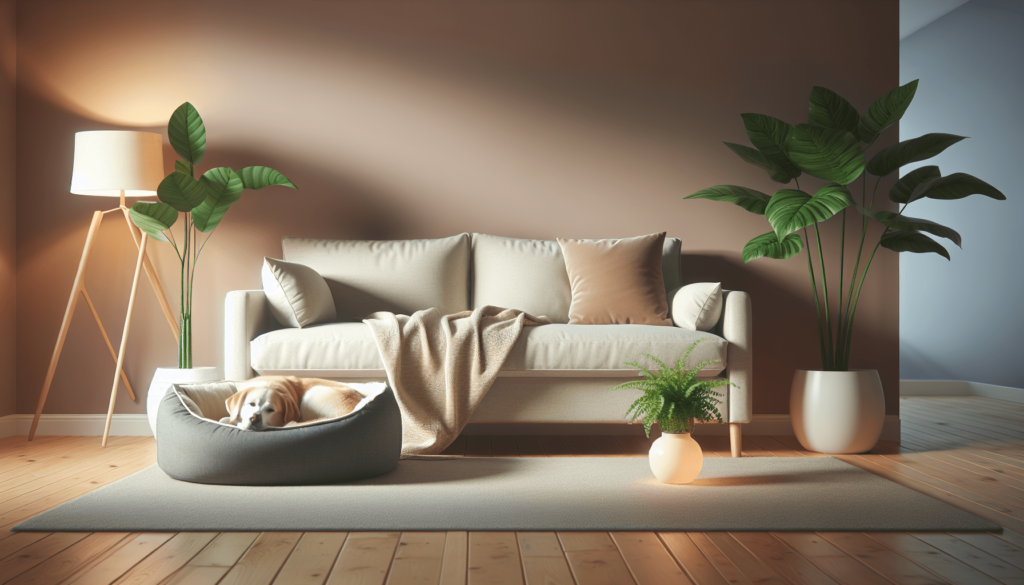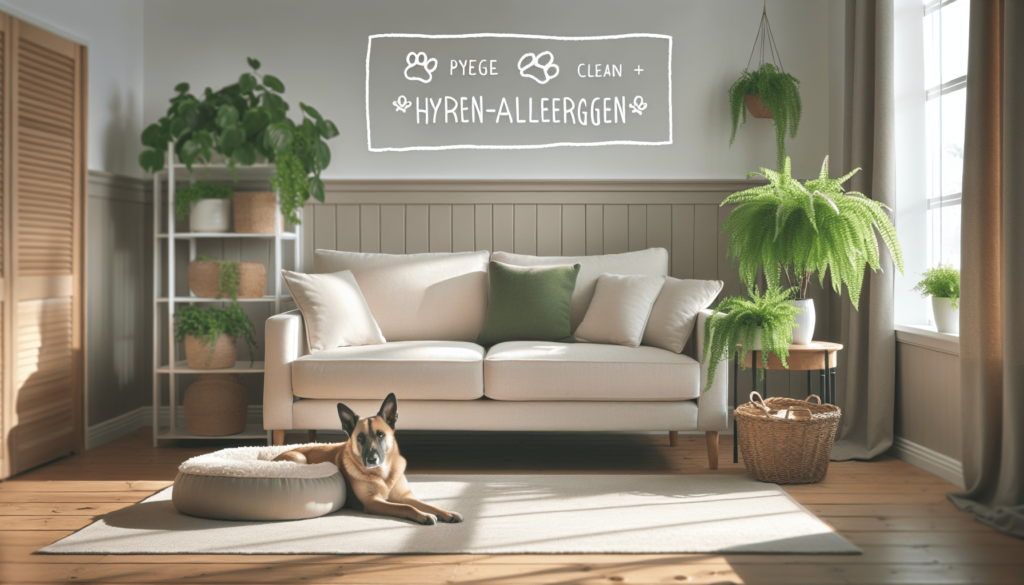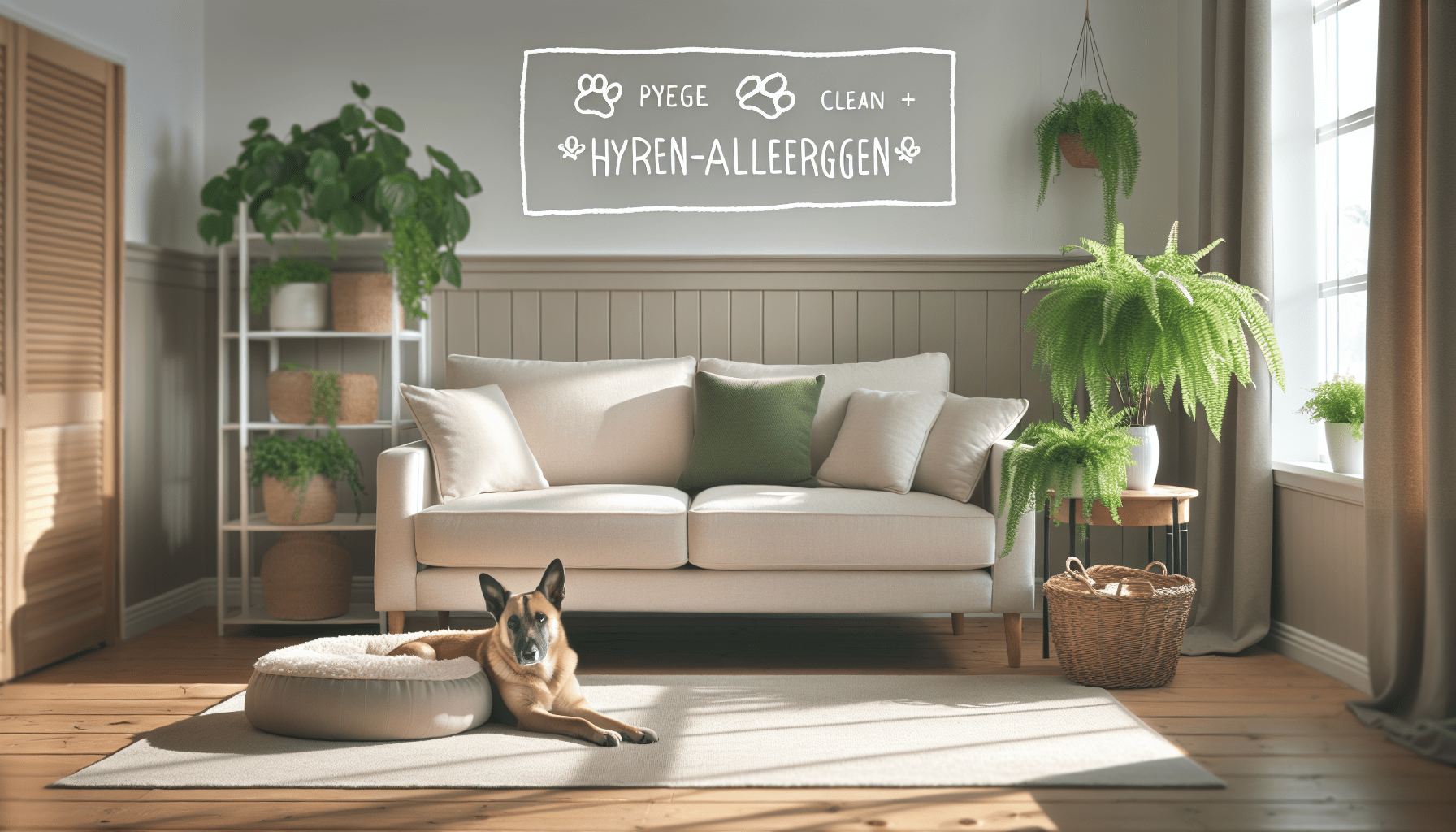Living with a furry friend can bring immense joy, but pet allergies can sometimes cast a shadow over that happiness. In “Effective Ways to Reduce Pet Allergies in Your Living Space,” you’ll discover practical tips to create a healthier home for both you and your beloved pets. From choosing hypoallergenic furniture to incorporating air purifiers and maintaining a strict cleaning routine, these easy-to-implement strategies will help you manage those pesky allergies and enjoy a more comfortable living environment. Have you ever felt torn between your love for your furry friends and the sneezing fits they seem to trigger? You’re not alone! Many pet owners face the reality of pet allergies, and it can be challenging to balance a love for animals with a comfortable living environment. Fortunately, there are plenty of effective strategies to manage and reduce pet allergies in your living space.

Understanding Pet Allergies
Before diving into the remedies, it’s essential to understand what causes pet allergies. Knowing this can help you tackle the problem more effectively.
What Causes Pet Allergies?
Pet allergies are typically triggered by proteins found in a pet’s skin cells, urine, and saliva. Animals shed tiny, even microscopic, flakes of skin known as dander. Even though fur might play a role by carrying dander around, it’s actually the proteins in dander that trigger allergic reactions.
Common Symptoms
Pet allergy symptoms can vary from mild to severe and can often mimic allergic reactions to other allergens like pollen or dust mites. Common symptoms include:
- Sneezing
- Runny or stuffy nose
- Itchy, watery eyes
- Coughing, chest tightness, and shortness of breath
- Asthma flare-ups
Now that you have a clearer understanding of pet allergies, let’s break down the effective ways to manage these allergies in your home.
Pet-Free Zones
Creating pet-free zones in your home can be an excellent way to manage pet allergies. Start with your bedroom since it’s where you spend a significant portion of your day.
Bedrooms as Sanctuary
Your bedroom should be a sanctuary from pet allergens. Here’s how to establish a pet-free zone:
- No Pets Allowed: Train your pets to stay out of the bedroom.
- Wash Bedding Frequently: Use hypoallergenic covers and wash your bedding at least once a week in hot water to kill any allergens.
- Air Purifiers: Use a high-efficiency particulate air (HEPA) purifier to remove airborne allergens.
Other Key Areas
Besides the bedroom, consider making other high-use areas pet-free zones:
- Bathrooms: Pets generally don’t need to be in bathrooms, so these can easily become allergen-free zones.
- Home Office or Study: If you work from home, you’ll want an allergen-free workspace.
Cleaning and Maintenance
Regular cleaning and maintenance can significantly reduce the presence of allergens. Let’s look at the best practices.
Regular Vacuuming
Vacuuming is your friend in the war against allergens.
- Use a HEPA Vacuum: Normal vacuums can stir up allergens. Use a vacuum with a HEPA filter to trap even the smallest particulates.
- Vacuum Frequently: Aim to vacuum at least twice a week, paying extra attention to areas where your pet spends the most time.
Dusting and Mopping
Don’t just stop at vacuuming. Regular dusting and mopping are also crucial.
- Electrostatic Cloths: Use electrostatic cloths or microfiber to trap dust rather than just moving it around.
- Wet Mopping: Wet mopping can pick up more dander than dry methods. Consider using a damp mop with an all-natural cleaning solution.
Grooming Your Pet
Just as important as cleaning your home is grooming your pet. This can significantly reduce the amount of dander they shed.
Regular Baths
Frequent baths can help wash away loose dander. Here’s how to do it correctly:
- Use Hypoallergenic Shampoo: Choose shampoos designed for pets with sensitive skin.
- Bath Frequency: Aim for a bath every week to two weeks, but consult your vet to ensure the bathing frequency is safe for your pet’s skin.
Brushing
Regular brushing helps capture loose hair and dander.
- Types of Brushes: Use brushes designed to capture dander, such as grooming gloves or shedding brushes.
- Brush Outside: Reduce the spread of dander by brushing your pet outside.

Air Quality Management
Ventilation and air quality control are critical in managing pet allergies. Let’s look at how to keep the air in your home as clean as possible.
Air Purifiers
Investing in a good air purifier can make a world of difference.
- HEPA Filters: Always choose air purifiers that have HEPA filters capable of trapping microscopic particles.
- Placement: Place air purifiers in the most commonly used rooms such as the living room and bedroom.
Humidity Control
Dander sticks around longer in dry air. Proper humidity levels can help.
- Use a Humidifier: Maintain indoor humidity levels between 40-50% using a humidifier.
- Monitor Levels: Overly humid air can foster mold growth, so aim to keep a balanced environment.
Your Furniture and Decor Choices
Believe it or not, your choice of furniture and decor can impact how effectively you can manage pet allergens.
Opt for Easy-to-Clean Materials
Choosing furniture that’s easier to clean can make your life simpler.
- Leather or Vinyl: Avoid fabric sofas and opt for leather or vinyl, which don’t trap allergens like fabric does.
- Washable Covers: If you have fabric furniture, consider using removable, machine-washable covers.
Carpets and Rugs
Carpets and rugs can be major traps for allergens.
- Limit Carpets: If possible, opt for hardwood or tile floors instead of carpets.
- Wash Rugs Regularly: If you have rugs, make sure they are washable and clean them frequently.
Pet Diet and Health
Your pet’s diet and overall health can actually affect the amount of allergens they produce.
Quality Diet
A high-quality diet can improve your pet’s skin health, potentially reducing dander production.
- Balanced Nutrition: Feed your pet a balanced diet rich in omega-3 fatty acids, which can improve skin health.
- Consult Your Vet: Always consult your veterinarian to choose the best diet tailored for your pet’s needs.
Regular Vet Visits
Regular check-ups can help you catch any skin issues or health problems early.
- Skin Conditions: Conditions like dry skin can exacerbate shedding and dander production. Treat these conditions promptly.
- Medications: Your vet may recommend medications or supplements to help with allergy management.
Dealing with Severe Allergies
For some, even the best efforts may not completely eliminate the discomfort caused by pet allergens. Here’s what to consider if allergies are severe.
Medications and Treatments
Over-the-counter and prescription medications can provide significant relief.
- Antihistamines: OTC antihistamines like cetirizine or loratadine can relieve mild symptoms.
- Prescription Medications: If OTC solutions don’t work, consult your doctor for stronger medications.
Immunotherapy
Allergy shots (immunotherapy) are another option:
- Long-term Solution: Allergy shots can help build tolerance over time, reducing sensitivity to pet allergens.
- Consult Allergist: Speak to an allergist to see if immunotherapy is a suitable option for you.
Involving the Whole Family
Reducing pet allergies should be a family affair. Everyone needs to be on board for the most effective outcomes.
Education and Engagement
Educate and involve all family members in allergy management.
- Awareness: Ensure everyone understands the significance of keeping pet-free zones and maintaining cleanliness.
- Routine: Create a routine and assign tasks related to cleaning and pet care among family members.
Guest Management
When guests visit, they may bring in allergies or be allergic themselves.
- Inform Guests: Let guests know you have pets so they can take their own precautions.
- Temporary Measures: Consider room-specific air purifiers and additional cleaning in guest areas.
Additional Tips and Tricks
Here are a few more hacks to make allergy management a bit easier.
Wash Hands
Always wash your hands after petting your pet to avoid transferring allergens to your face and other surfaces.
Change Clothes
Change your clothes after extended play or grooming sessions with your pet to reduce dander spread.
Use Allergen-blocking Bedding
Use allergen-blocking mattress and pillow covers to prevent allergens from settling into your bed at night.
Summary Table of Allergy Management Strategies
| Strategy | Action Steps | Frequency |
|---|---|---|
| Pet-Free Zones | Designate and enforce pet-free areas like bedrooms and bathrooms | Ongoing |
| Cleaning | Vacuum with a HEPA filter, dust with electrostatic cloths, wet mop floors | Weekly |
| Grooming | Bathe pets with hypoallergenic shampoo, brush pets outside | Weekly |
| Air Quality | Use HEPA air purifiers, maintain humidity levels between 40-50% | Daily/Seasonal |
| Furniture | Opt for leather or vinyl, use washable covers for fabric furniture | As needed |
| Pet Health | Provide a balanced diet, schedule regular vet visits | Ongoing |
| Medications | Use antihistamines or prescription meds for allergic family members | As needed |
| Education | Inform and involve family members in allergy management | Ongoing |
Managing pet allergies may seem daunting at first, but by following these tried-and-true tips, you can create a more comfortable living environment without sacrificing the companionship of your beloved pets. With a little bit of effort and consistency, you and your furry friends can live together more harmoniously. Enjoy your allergy-free, pet-inclusive life!
